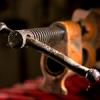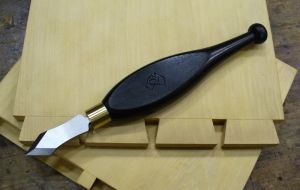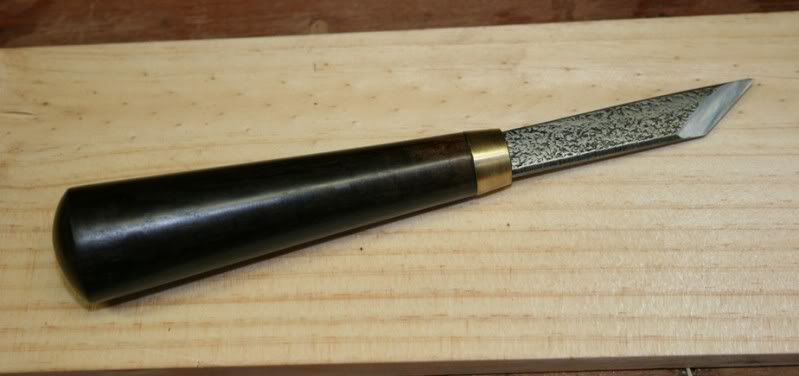I had to cut several dados and I realized that my marking Knife is not great for that task.
I have the Blue Bruce small knife, it is a nice tool and it fits nice on my hand. The problem is that the blade is not substantial enough to draw a line with against a ruler.
My first knife pull is very light to just mark the wood. The second pull is a little harder and third one is hard. So this creates a nice knife mark and I can chisel to the line.
The problem is the blade is thin and it follows the wood grain. I have problems chiseling to the line because the second one is too close and they become one.
I like the Vee point or diamond shape blade. So I can use it both directions. I had another one that was a single bevel, and I rather have double bevel (vee point).
Do you guys have any recommendation? I was thinking of Japanese marking knife (good thick blade) so I looked the Japan Woodworker site and they have one. I placed the order last week, but I still waiting for shipment.
I will cancel it if I get a better option.
Any recommendations?
Thanks,
Fidel




 Reply With Quote
Reply With Quote












 ). Seriously, I got one as a stocking stuffer and it is surprisingly useful as a striking knife for things where you are out in the open and don't need a good flat bearing surface. I reach for it more than I thought I would and had to relocate it closer to the bench . . . who knew?
). Seriously, I got one as a stocking stuffer and it is surprisingly useful as a striking knife for things where you are out in the open and don't need a good flat bearing surface. I reach for it more than I thought I would and had to relocate it closer to the bench . . . who knew?  With the hooked point it is the opposite of the rounded tip that Daniel R. describes but, does have its uses.
With the hooked point it is the opposite of the rounded tip that Daniel R. describes but, does have its uses.
